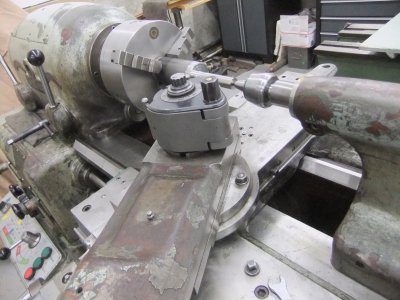Well Zimm, that is a good point you raised. I had the carriage and apron all apart on my little lathe - so I figured I'd add a cross slide lock. I spaced it evenly between the gib screws, lined it up pretty, made a plug with the end cut at an angle to match the gib -- that was more than a year ago. I have used that lathe a decent amount, but have used the nifty little cross slide lock exactly
zero times.

In fairness, before I got the small lathe and a milling machine, I used my other lathe for everything - including milling with a SB mill attachment that I worked out an adapter plate for. I would occasionally lock up the cross slide for certain tasks (per the recommendations above).
With most lathe work (at least the sort of stuff I've been doing), I know which way the work is going to be pushing. Certainly, the carriage lock makes sense (when the feed is off, there is nothing keeping the carriage in longitudinal position). For the cross / compound slides, once the tool load comes on, the back lash will get taken up and that slide cannot really go anywhere. With conventional machines, backlash is a fact of life (obviously lots of great work gets done on lathes that don't have a cross slide lock).
Deffinately for milling with a lathe, the cross slide lock is usefull. Perhaps if one were drilling from the tool post, the lock would be handy? I do have a tool post drill arrangement on my larger lathe (the one without the cross slide lock) - which, by the way is fabulous for large drill bits. Never noticed any problem - but drilling big holes is not a very precise task anyway.
Zimm, Perhaps your thread here will be the start of a survey on what applications a lathe cross slide lock would be useful for?




